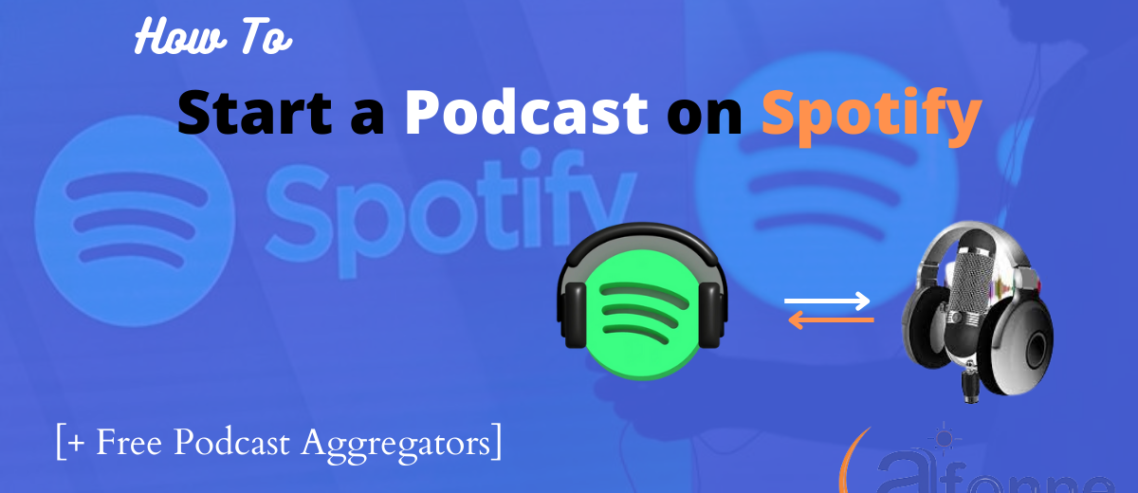How To Start a Podcast on Spotify [+ Aggregators]
With over 100 million users, Spotify has quickly become the go-to platform for podcast consumption and the perfect place to start and grow your podcast.
It offers a variety of features, including customized playlists, song lyrics, and artist radio.
Because, in addition to music streaming, Spotify also offers podcast streaming.
This makes it a great option for starting a podcast, as it has a large user base and a variety of features that make podcasting easy.
In this article, we’ll walk through the steps for starting a podcast on Spotify.
Requirements
Microphone – A good quality microphone is essential for quality audio.
Recording software – There are some free recording software options available, such as Audacity.
Hosting – You’ll need to find a hosting platform for your podcast episodes.
Podcasting app – To submit your podcast to Spotify, you’ll need to create a podcasting app.
Spotify accounts you’ll need a Spotify account to submit your podcast.
Now that you have the essentials, let’s take a look at how to start a podcast on Spotify.
Here’s a quick guide on how to start a podcast on Spotify.
1. Choose a podcast host
There are several great podcast hosts out there, but Captivate is a great option if you’re looking to start a podcast on Spotify.
Hosts like Buzzsprout make it easy to create and distribute your show, and they have a wide range of features that will make your podcast stand out.
2. Create a podcast show
Once you’ve chosen a podcast host, it’s time to create your show. This involves creating a title, description, and episode list. Be sure to make your show as professional as possible, and include interesting content that will keep listeners engaged.
3. Upload your podcast episodes
Once your show is created, it’s time to start uploading episodes. Be sure to include a brief description of each episode, as well as any relevant keywords that listeners might use to find your show.
4. Market your podcast
The last step is to start marketing your podcast. This involves creating a website, social media profiles, and email lists to promote your podcast.
Spotify for Podcasters
Spotify offers a suite of tools for podcasters, which makes it an attractive option for those looking to distribute their content.
Spotify for podcasters includes all that Spotify has to offer podcasters.
What Is Spotify For Podcasters?
Spotify for Podcasters is a suite of tools that allows podcasters to distribute their content on the Spotify platform.
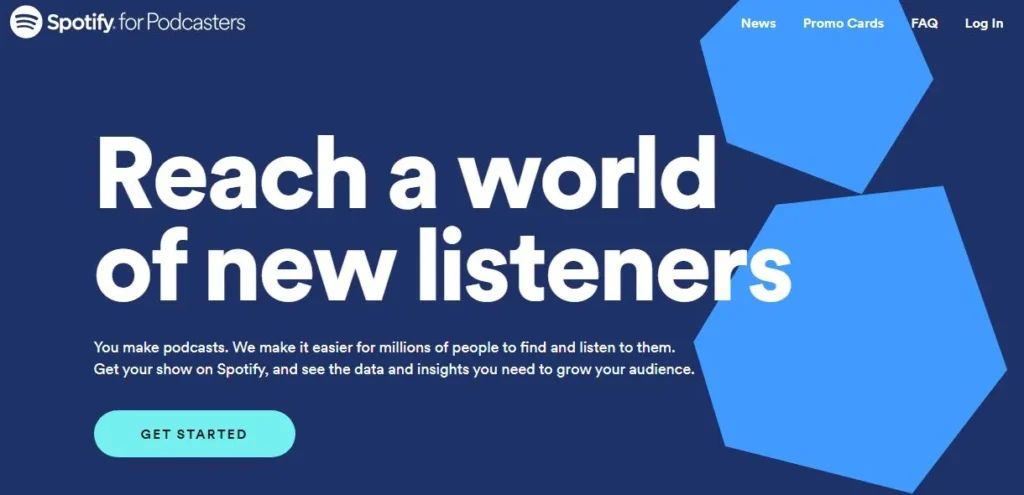
It includes a distribution tool that allows podcasters to submit their content to Spotify, as well as a listener analytics tool that provides podcasters with data on who is listening to their content and where.
Getting Ready To Start A Podcast on Spotify
The first step is to come up with a topic for your podcast. Once you have a topic in mind, you’ll need to come up with a format for your show.
Your show can be anything from a solo podcast to a panel discussion.
You can also choose to do a monologue, an interview-based show, or even a comedy podcast. The key is to find a format that you’re comfortable with and that you think will be interesting to your listeners.
Once you’ve settled on a format, it’s time to start recording your episodes.
Be sure to keep your episodes between 20 and 30 minutes long, as most people won’t want to listen to a longer episode.
Chapter 1 – How To Record A Podcast For Spotify
1. Choose your equipment
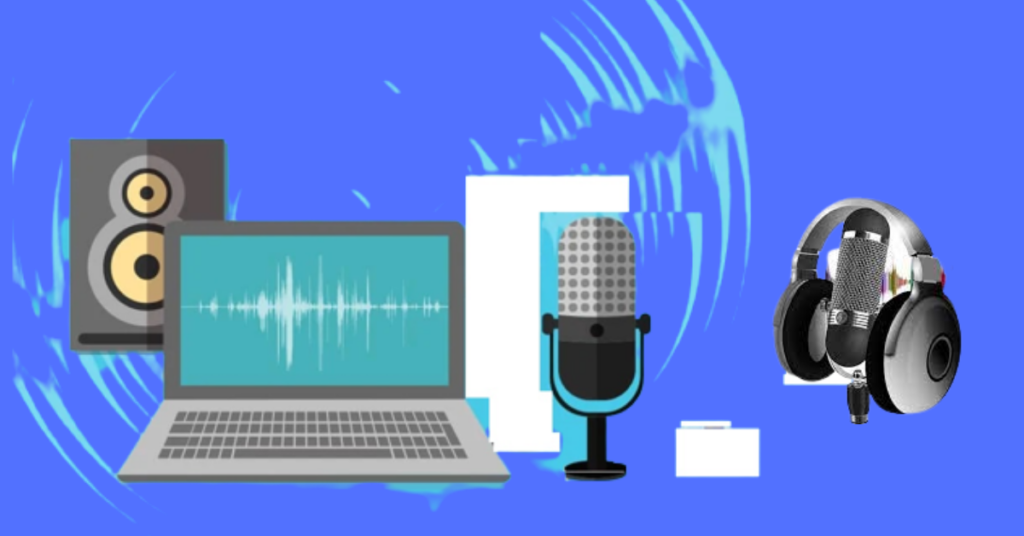
To record a podcast, you’ll need some basic equipment:
A computer or laptop, microphone, headphones, audio editing software, and Buzzsprout (a podcast hosting site).
There are a variety of microphones and headphones to choose from, so you can find the best option for your budget and needs.
For example, the Blue Yeti microphone is a popular option for podcasters, because it’s affordable and produces high-quality sound.
2. Record your podcast
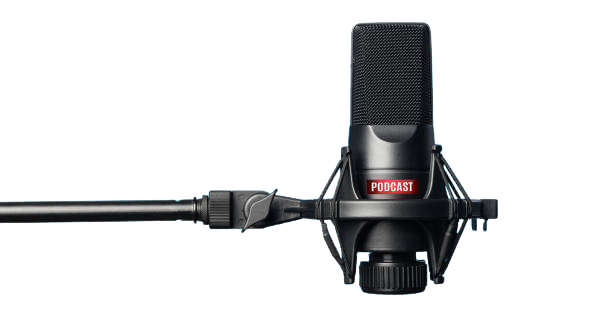
Once you have your equipment, it’s time to start recording your podcast.
Here are a few tips:
Make sure your microphone is close to your mouth, and speak directly into it.
Avoid background noise, and try to find a quiet place to record.
Be sure to speak clearly and enunciate your words.
It’s a good idea to practice recording your podcast a few times before you start recording episodes.
This will help you get comfortable with the process and ensure that your episodes sound great.
3. Edit your podcast
Once you’ve recorded your podcast, it’s time to edit it.
Chapter 2 – How To Create A Spotify Account for Your Podcasts
1. Create A Spotify Account
The first step is to create a Spotify account. If you don’t have one already, you can create one for free on Spotify’s website.
2. Download The Spotify App
The next step is to download the Spotify app. The app is available for free on both the App Store and Google Play.
3. Create a podcasting app
This is the app that you’ll use to submit your podcast to Spotify. To create a podcasting app, head to the Spotify Developer Portal and create a new app.
4. Create A Podcast Show
The next step is to create a podcast show. This is the show that your podcast will be associated with.
To create a podcast show, open the Spotify app and click on the “Browse” tab. Then, click on the “Podcasts” tab and select “Create a show.”
Enter the name of your show and select the language. Then, click on the “Create” button.
5. Upload Your Podcast Episodes
The next step is to upload your podcast episodes.
To upload your podcast episodes, open the Spotify app and click on the upload button.
Chapter 3 – How To Submit Your Podcast to Spotify
Spotify is a music streaming service with over 75 million active users. In addition to music, Spotify also offers podcasts.
P.S: When submitting your podcast, make sure to include:
- Name of your podcast
- Category of your podcast
- The language of your podcast
- Country of your podcast
- Link to your podcast’s website
- Brief description of your podcast
- Your podcast’s logo
Here’s how to submit your podcast to Spotify:
- Click GET STARTED.
- Enter your email address and password.
- If you don’t have a Spotify account, click CREATE ACCOUNT and follow the instructions.
- Once you’re logged in, click My Podcasts in the top navigation bar, Click + New Podcast.
- Enter your podcast’s RSS feed URL.
- Click Validate and then Save.
Spotify will begin importing your podcast and it will be available to listeners after it’s reviewed, approved and.
added to the podcast’s directory.
Your podcast will now be available for streaming on Spotify.
Congratulations! You’ve successfully submitted your podcast to Spotify.
Now that your podcast is available on Spotify, you’ll want to start promoting it.
So far, if you’re having trouble importing your podcast, or if you have any other questions, please contact Spotify through any medium convenient for you.
Chapter 4 – How To Promote Your Podcast on Spotify

There are a few things you can do to help promote your podcast on Spotify:
- Add a link to your podcast on your website or blog.
- Share links to your podcast on social media.
- Add your podcast to directories like Apple Podcasts and Google Play.
- Encourage your listeners to stream your podcast on Spotify.
By promoting your podcast on Spotify, you’ll help increase its exposure and reach more listeners.
List of Spotify Podcast Aggregator Partners
Spotify has become the dominant force in the music streaming industry.
It currently has over 100 million paid subscribers and over 217 million monthly active users.
To expand its podcasting offerings, the company has been partnering with podcast aggregators.
What Is A Podcast Aggregator
A podcast aggregator is a service that collects podcasts and makes them available for streaming or downloading.
Spotify is a popular music streaming service, and many people use it to listen to podcasts.
If you want to start a podcast on Spotify, you’ll need to partner with an aggregator.
There are several podcast aggregators available, and each has its strengths and weaknesses.
Here is a list of the top Spotify podcast partner aggregators.
1. Buzzsprout
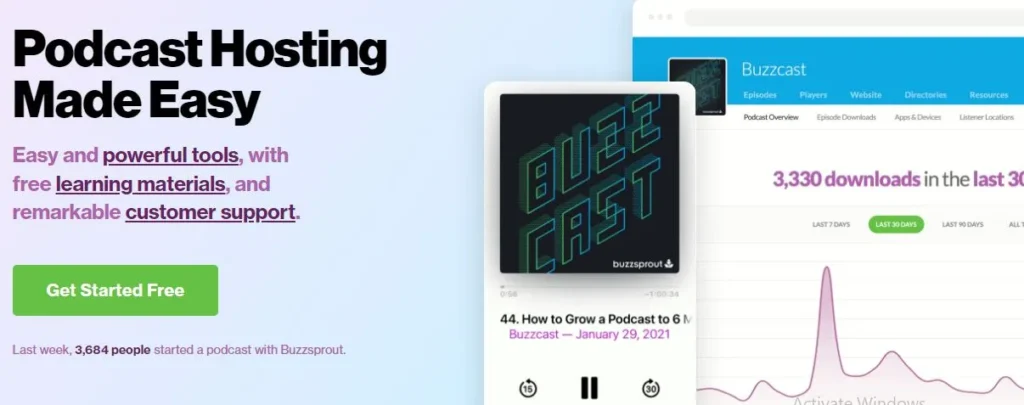
Buzzsprout is a podcast aggregator partner of Spotify, and we’re here to help you get your show up and running.
Let’s walk you through the basics of starting a podcast on Spotify, from creating a show and submitting it for inclusion in the Spotify catalog to configuring your podcast’s settings and promoting your content.
Creating a show
The first step in starting a podcast on Spotify is creating a show. This is the basic unit of organization for your podcast content and will be used to create your podcast’s RSS feed.
There are a few things to keep in mind when creating a show:
- Your show must have its unique name.
- Your show must have a unique RSS feed.
- Your show must have at least one episode.
- Your show’s episodes must be hosted on a web server that can deliver Podcast XML files.
Submitting your show for inclusion in the Spotify catalog
Once your show is created, you’ll need to submit it for inclusion in the Spotify catalog.
This is a process that can take a few days, so be sure to allow plenty of time for your show to be approved.
2. Acast

If you’re looking to start a podcast on Spotify, you’re in luck! Spotify podcast aggregator partners like Acast make it easy to get your show up and running.
Here’s a quick guide on how to get started.
First, create an account with Acast. Then, head to the Acast dashboard and click “Create a New Podcast.”
Fill out the form with all the relevant information about your podcast, including the name, description, and episode format.
Next, you’ll need to create a feed for your podcast. This is the file that will tell Acast and other podcast aggregators how to find and download your episodes.
You can create a feed using a tool like Feedburner or Blubrry.
Finally, submit your podcast to Acast and other aggregators. This will help get your show in front of new listeners.
With Acast, creating a podcast is easy and affordable. So what are you waiting for? Start podcasting today!
3. Anchor
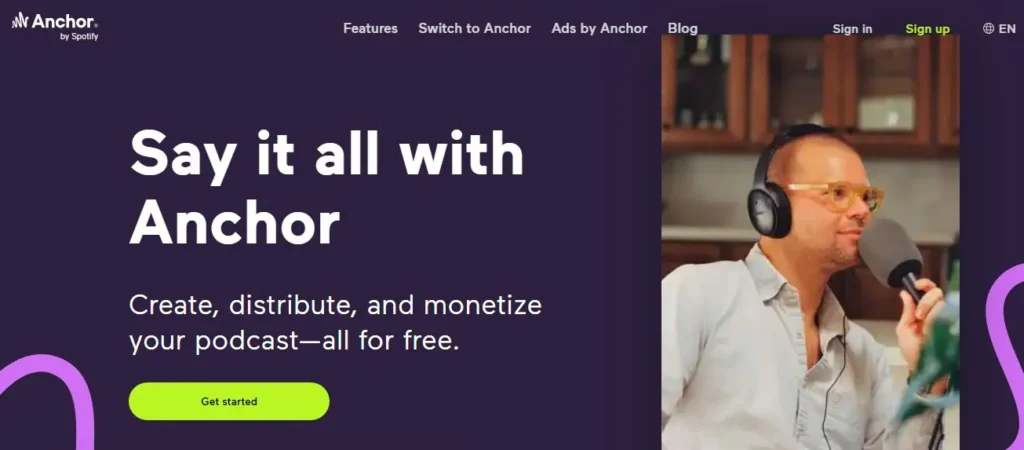
Anchor is one of the most popular podcast aggregators.
It has over 2 million creators and over 24 million monthly active users.
In February of 2019, Anchor announced that it had partnered with Spotify. This partnership allows Spotify users to easily find and listen to Anchor podcasts.
To leverage this partnership, you first need to create an account on Anchor. Then, you need to create a podcast.
You can do this by clicking on the “Create a Podcast” button on the Anchor homepage.
Next, you need to add some episodes to your podcast. You can do this by clicking on the “Add Episode” button on the Anchor homepage.
Then, you need to add some tags to your podcast. Tags are keywords that describe your podcast. You can add tags by clicking on the “Tags” tab on the “Edit Podcast” page.
Finally, you need to add your podcast to the Spotify directory. You can do this by clicking on the “Spotify” tab on the “Edit Podcast” page.
Once you have added your podcast to the Spotify directory, it becomes available for listening.
4. Audioboom
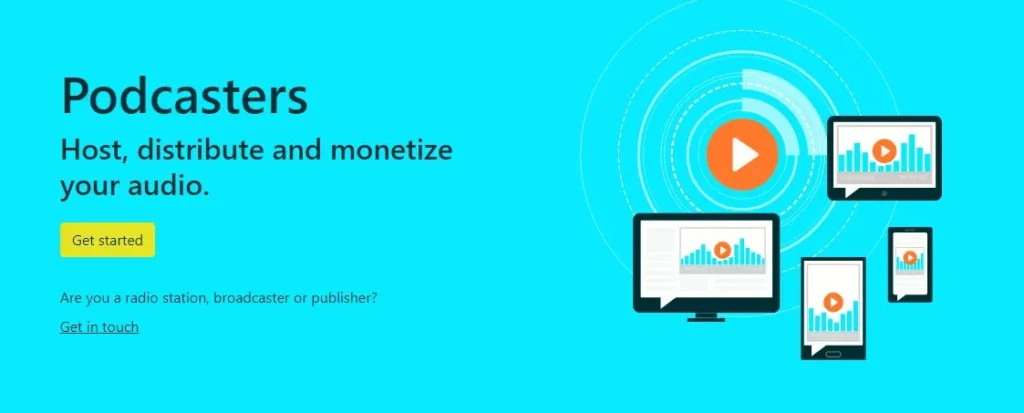
How do you start a podcast on Spotify and partner with Audioboom, the world’s largest podcast network.
First, you’ll need to create a podcast feed.
This is a simple text file that contains information about your podcast, including the title, description, and episode URLs.
You can create a feed with a tool like FeedBurner, and then submit it to Audioboom.
Once your podcast is live on Audioboom, you can submit it to Spotify.
Just head to the Spotify for Podcasters website and follow the instructions.
Now that your podcast is on Spotify, you can start streaming and downloading episodes on your desktop, mobile device, or smart speaker.
And don’t forget to promote your podcast on social media and on your website.
5. Audiomeans

The next on the list is Audiomeans, a podcast aggregator that partners with Spotify to make it easy for you to get your show up and running.
This guide helps you to get started.
First, you’ll need a Spotify account. If you don’t have one, you can create one for free at Spotify.com.
Next, you’ll need to create a podcast show on Audiomeans. You can do this by going to Audiomeans.com and clicking on the “Create a Show” button.
Once you’ve created your show, you’ll need to add a few details, including a show name, description, and episode list.
You can also add artwork for your show.
Once your show is created, you’ll need to add your podcast to Spotify.
To do this, go to your show’s page on Audiomeans and click on the “Add to Spotify” button.
You’ll be prompted to sign in to your Spotify account. Once you’ve signed in, you’ll be asked to give your show a name and description.
Once your show is added to Spotify, it will be available for listeners on both Audiomeans and Spotify.
6. Blubrry

If you’re looking to start a podcast on Spotify, Blubrry is a great aggregator partner to work with. They provide a wide range of podcasting tools and services, including podcast hosting, analytics, and promotion.
Blubrry also has a wealth of experience in the podcasting industry and is committed to helping podcasters grow their audience and revenue.
They offer a wide range of monetization options, including sponsorships, advertising, and listener donations.
If you’re looking to start a podcast on Spotify, Blubrry is a great partner to work with. To learn more, visit the Blubrry website.
7. Castos
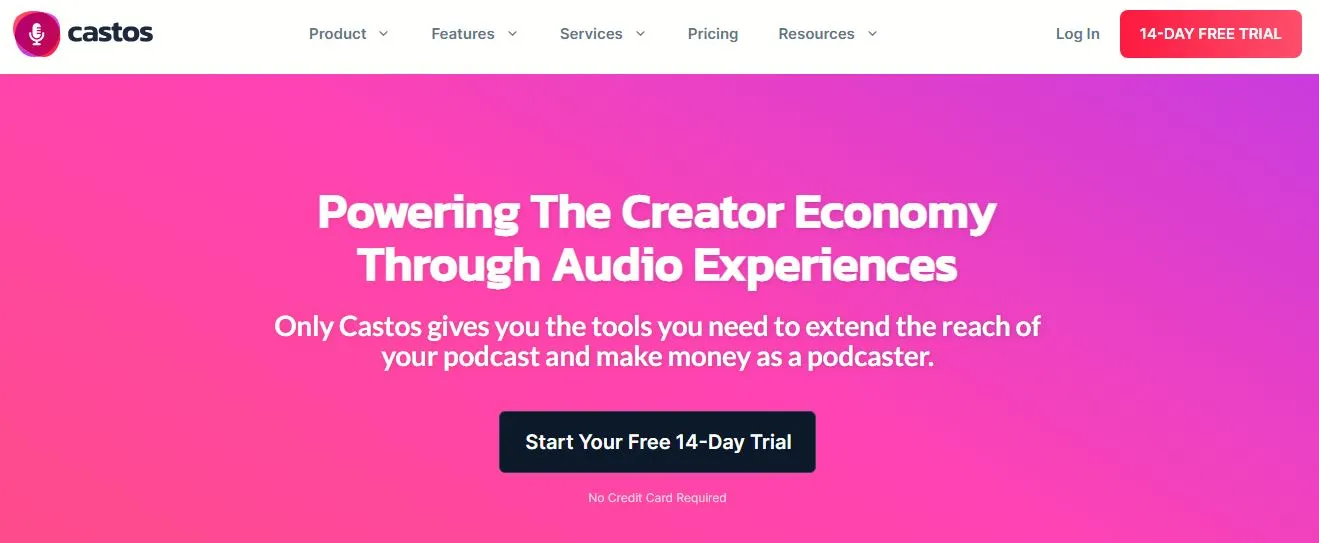
If you’re looking to start a podcast on Spotify, Castos could be your best bet.
As one of the most popular podcast aggregators on the planet, Castos has a ton of great features to help you get your show off the ground.
First, Castos offers a comprehensive guide to starting a podcast, from registering your show with Apple Podcasts to setting up your first episode.
They also have a wide range of tutorials to help you get the most out of their platform, from recording and editing your podcast to marketing and monetizing your show.
Castos also offers a wide range of features to help you grow your audience.
Their RSS feed feature makes it easy to submit your show to directories like Apple Podcasts and Google Play, and their social media integrations make it easy to share your episodes on Facebook, Twitter, and LinkedIn.
Castos also offers a built-in player that makes it easy for listeners to play your episodes right on your website.
Finally, Castos offers a range of monetization options to help you make money from your podcast.
They offer both paid and free hosting plans, and they have a variety of advertising and sponsorship options to help you make money from your show.
If you’re looking to start a podcast on Spotify, Castos is the perfect platform for you.
With their comprehensive guide to starting a podcast and their wide range of features and integrations, Castos makes it easy to get your show off the ground and
8. Captivate
Another way to start a podcast on Spotify through one of their partnerships is using Captivate, which can help you get your show up and running in no time.
9. iono.fm
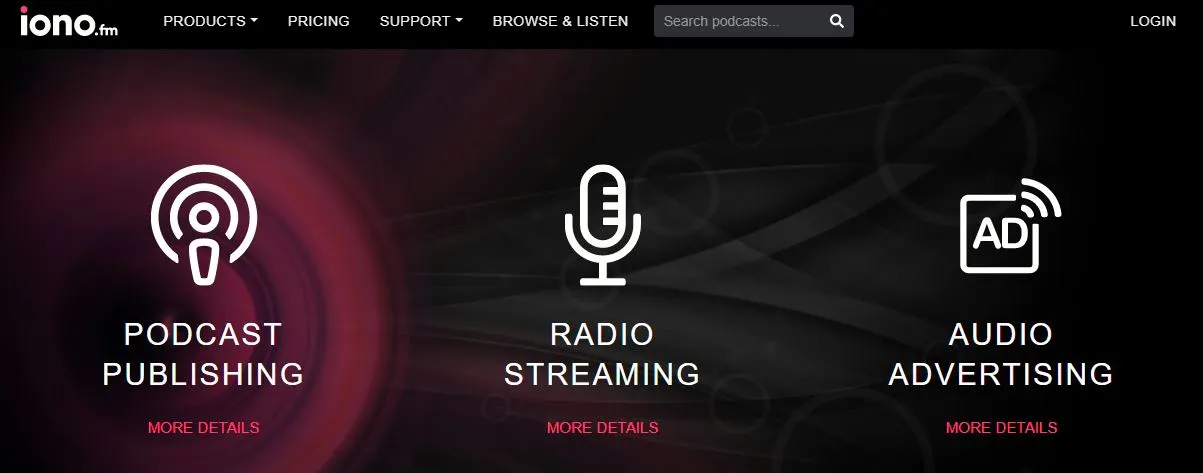
If you want to use iono.fm, create an account and add your podcast. You’ll need to provide your podcast’s RSS feed and some other information. iono.fm will take care of adding your podcast to Spotify.
If you want to use Spotify’s podcasting tool, create a new playlist and add the podcast episodes you want to share.
In the playlist’s settings, select “Podcast” as the type. Then, provide the RSS feed for your podcast.
This can be one of the easiest ways to get your podcast on Spotify.
10. LibSyn
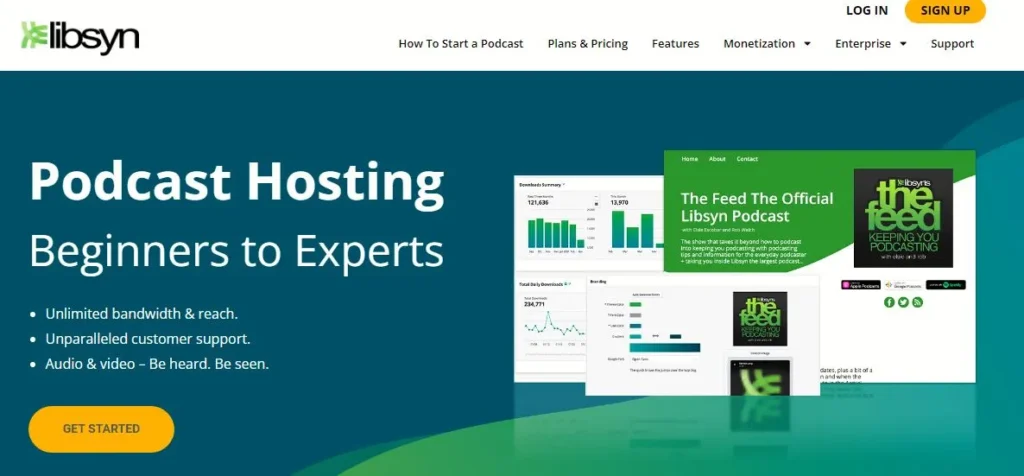
LibSyn is one of people’s favorite Spotify podcast aggregator partners, and they have a wide range of features to make your podcast shine.
Once you’ve partnered with LibSyn, you’ll need to create an account and set up your podcast.
LibSyn will provide you with all the tools you need to create a professional and polished podcast. They’ll also help you get your podcast listed on Spotify.
Once your podcast is set up, it’s time to start recording!
LibSyn makes it easy to record and publish your episodes, so you can focus on creating great content.
And you get to see your podcast statistics, so you can track your audience and measure your success.
11. Megaphone
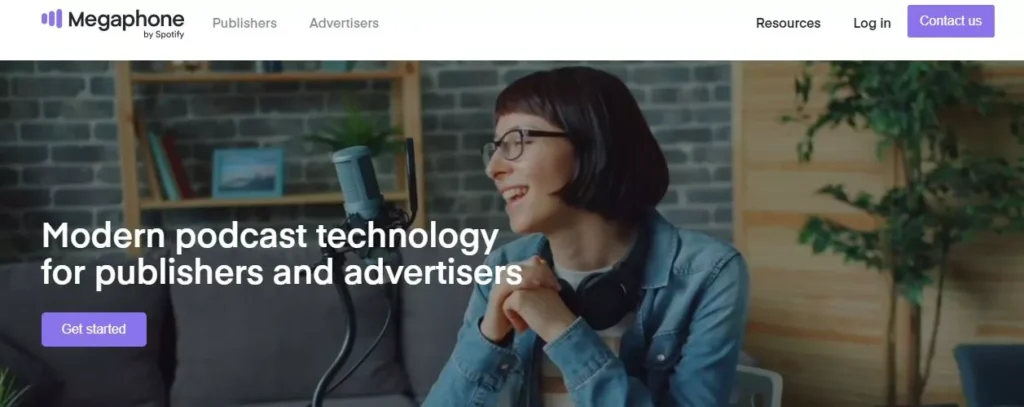
If you’re looking to start a podcast, Megaphone is the perfect partner.
Megaphone has extensive experience working with podcasters and provides a suite of tools to make starting a podcast on Spotify easy.
Megaphone’s podcast aggregator partners with the world’s largest podcast directory, Spotify. This gives podcasters access to Spotify’s 120 million active users and the ability to monetize their content through ads.
Megaphone also provides detailed analytics on listener engagement, which can help podcasters fine-tune their content to better engage their audience.
11. Omny
Omny is one of podcasters’ favorites – it’s easy to use and has a great selection of podcasts to choose from.
Here’s a quick guide on how to get started with Omny:
- Head to the Omny website and create an account.
- Click on the “Podcasts” tab and search for the podcast you want to add.
- Click on the “Add to Spotify” button and follow the instructions.
- Once your podcast has been added to Spotify, it will appear in your podcast library on the website.
That’s it – it’s that easy!
12. Pinecast
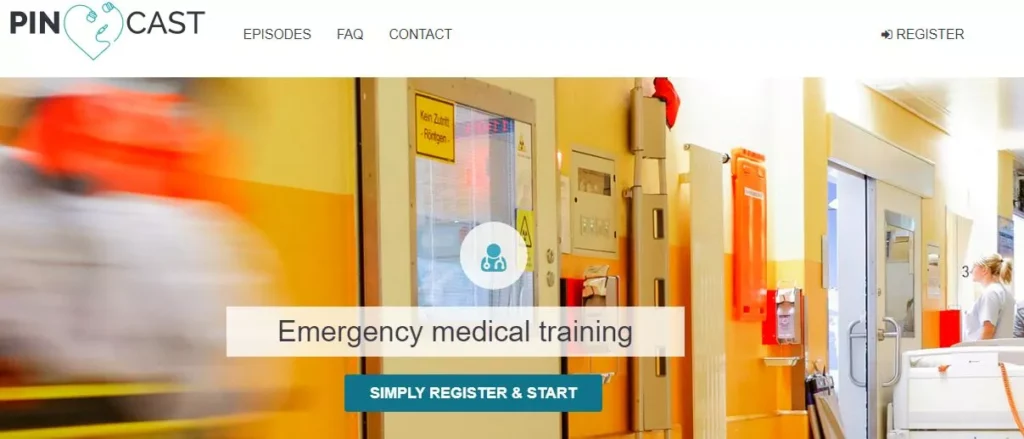
Since the first step in starting a podcast on Spotify is finding the right aggregator partner, we have mentioned a lot of partners already that you can choose from and start podcasting.
Now Pinecast.
This is a great option because it has a simple, user-friendly interface and is affordable.
13. PodBean

If you’re looking to start a podcast on Spotify, you’ll need to partner with an aggregator.
Spotify podcast aggregators like Podbean make it easy to get your podcast on the popular music streaming service.
Here’s how it works:
- Create an account with Podbean.
- Upload your podcast episodes.
- Add your podcast to the Spotify directory.
- Listeners can find and subscribe to your podcast on Spotify.
That’s it!
Partnering with an aggregator is a great way to get your podcast in front of a larger audience.
14. Podigee
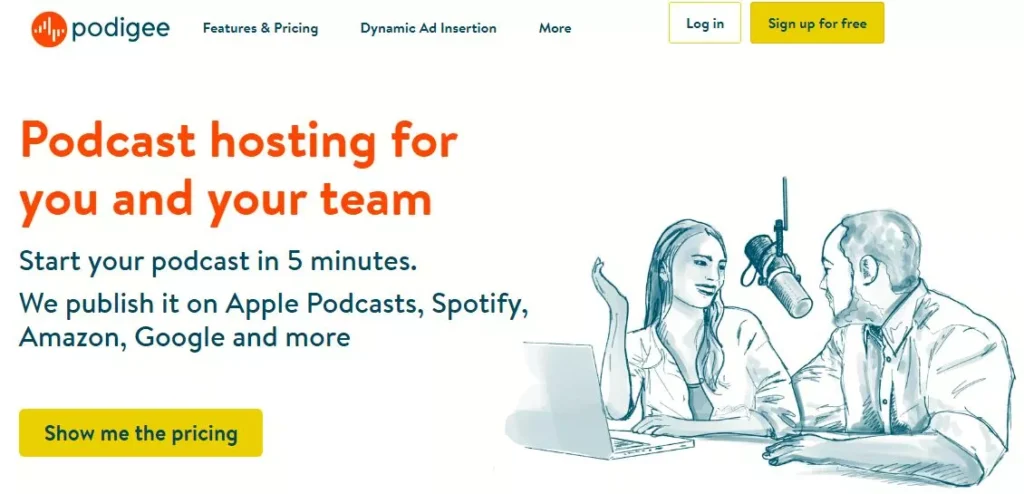
Podigee is one of the podcast aggregators Spotify partners with.
It allows you to easily import your podcast RSS feed, create episode and show notes, and add cover art and other metadata. You can also manage your podcast’s analytics and syndication.
To start a podcast on Spotify using Podigee, follow these steps:
- Sign up for a Podigee account.
- Import your podcast RSS feed.
- Create episodes and show notes.
- Add cover art and other metadata.
- Manage your podcast’s analytics and syndication.
- Start streaming your podcast on Spotify.
15. Podomatic

Podomatic is one of the many Spotify podcast aggregator partners.
With this partnership, you can easily start a podcast on Spotify.
Simply create an account on Podomatic, and connect your Spotify account.
Once your accounts are connected, your podcast will automatically be added to Spotify.
To create a podcast on Podomatic, first, create an account.
Then, create a new podcast by clicking the “Create a New Podcast” button.
Enter the basic information about your podcast, including the title, description, and episode notes.
In the next step, you’ll add your podcast’s RSS feed.
To find your podcast’s RSS feed, open your podcast in a web browser and click the “Copy URL” button.
Paste the RSS feed into the Podomatic feed field, and click the “Verify” button.
Next, add the artwork for your podcast. The artwork should be a square image, at least 1400×1400 pixels in size. You can also add a subtitle and keywords for your podcast.
In the final step, you’ll connect your Spotify account. Click the “Connect to Spotify” button and sign in to your account.
Once your accounts are connected, your podcast will automatically be added to Spotify.
Now that your podcast is on Spotify, you can start publishing episodes.
16. RedCircle
One of the easiest ways to publish your episodes is to use an aggregator partner like RedCircle.
RedCircle is a Spotify podcast aggregator that makes it easy to publish and manage your podcast.
17. Simplecast
To start using Simplecast, first, you’ll need to create a Simplecast account.
Once you’ve registered for an account, you’ll be taken to your account dashboard.
From there, click on the “Podcasts” tab, and then select “Create Podcast.”
Next, you’ll need to enter some basic information about your podcast.
This includes the title of your podcast, the description, and the category.
You’ll also need to enter the RSS feed for your podcast. If you don’t have an RSS feed, Simplecast can create one for you.
Once you’ve filled out all of the information, click on the “Create Podcast” button. You’ll then be taken to the “Podcast Settings” page.
From here, you can configure your podcast settings. This includes setting a featured image, configuring your podcast settings, and setting up your podcast stats.
Once you’ve configured your podcast settings, click on the “Save Changes” button. You’re now ready to start publishing your podcast!
To publish your podcast, simply click on the “Publish” button.
Your podcast will then be published to Simplecast and will be available on Spotify.
18. Sounder.fm
If you’re looking to start a podcast on Spotify, Sounder.fm is a great place to start.
They’re one of Spotify’s podcast aggregator partners, which means they have direct access to Spotify’s podcast library.
This makes it easy for you to get your podcast in front of Spotify’s massive audience of over 100 million users.
To start a podcast on Sounder.fm, simply create an account and then add your podcast feed.
Sounder.fm will automatically submit your podcast to Spotify for approval.
Once your podcast is approved, it will be added to Spotify’s podcast library and will be available to all of Spotify’s users.
Sounder.fm is a great option for starting a podcast on Spotify, but there are a few things to keep in mind.
First, Sounder.fm is a paid service, so you’ll need to pay a monthly fee to use their services.
Second, they don’t have a lot of features, so you may want to look for another podcast aggregator if you need more advanced features.
Overall, Sounder.fm is a great option for starting a podcast on Spotify.
They have a direct connection to Spotify’s podcast library, which makes it easy for your podcast to reach a large audience.
They also have a simple, easy-to-use interface, which makes it easy for you to get started.
19. Spreaker
There are a few different ways to start a podcast on Spotify.
The first way is to create a new show on Spreaker, and then link your Spreaker and Spotify accounts.
The second way is to use a podcast aggregator partner like Spreaker, which will automatically submit your show to Spotify for you.
To create a new show on Spreaker, go to https://www.spreaker.com/ and click “Create a Show.” Then, enter your show’s information and click “Create.”
Next, link your Spreaker and Spotify accounts. To do this, go to Speaker > account and click “Integrations.” Then, click “Spotify” and follow the instructions.
Finally, submit your show to Spotify. To do this, go to Speaker > account and click “Spotify.” Then, click “Submit a Show” and follow the instructions.
To use a podcast aggregator partner like Spreaker, go to Speaker > and click “Podcast Partners.” Then, click “Spotify” and follow the instructions.
20. Transistor
Now, Transistor is a podcast aggregator that makes it easy for you to start broadcasting your show to the world.
Here are a few reasons why you should start a podcast on Spotify with Transistor:
1. Reach a new audience: With over 100 million active users, Spotify is a great platform to reach new listeners.
2. Easy to use: Transistor makes it easy to start a podcast on Spotify. Just create an account, add your show, and you’re ready to go.
3. Robust stats and analytics: Transistor provides you with detailed stats and analytics so you can track your podcast’s performance.
4. Distribution to iTunes and other podcast directories: Transistor automatically distributes your show to iTunes and other podcast directories.
5. Free to use: Transistor is free to use. There are no monthly fees or contracts.
If you’re ready to start a podcast on Spotify, Transistor is the perfect platform for you.
21. Whooshkaa
If you’re looking to start a podcast on Spotify, Whooshkaa is a great aggregator partner to work with.
They’re one of the leading podcast platforms in Australia and New Zealand, and they have a wealth of experience and resources to help you get your podcast off the ground.
Whooshkaa offers a range of services to help you get started, including:
- Production and hosting services
- Marketing and promotion
- Monetization options
- Technical support
They also have a wide range of features and tools to help you make the most of your podcast, including:
- A comprehensive podcast directory
- Podcast analytics
- A podcast player
- Social media integration
- Integrated advertising and sponsorship opportunities
If you’re looking to start a podcast on Spotify, Whooshkaa is a great partner to work with.
Tips For Promoting Your Spotify Podcast
Spotify is a great place to start a podcast because it has a built-in audience of millions of users.
Here are some tips for promoting your podcast on Spotify:
- Make sure your podcast is listed in the Spotify directory.
- Create a compelling podcast profile that includes a description of your show, your episode titles, and a list of your guests.
- Upload high-quality cover art for your podcast.
- Upload your podcast episodes to Spotify and include a link to your show’s website or blog.
- Share links to your podcast episodes on social media and encourage your listeners to subscribe to your show on Spotify.
- Use the Spotify embed player to embed your podcast episodes on your website or blog.
- Run ads for your podcast on Spotify.
- Host a live podcast event and promote it on Spotify.
- Collaborate with other podcasters and promote your joint podcasts on Spotify.
- Keep your podcast listeners engaged by releasing new episodes regularly.
How To Monetize Podcasts on Spotify
There are a few different ways to monetize a podcast on Spotify.
The most common way is to have sponsorships from companies that want to reach your audience.
Another way is to have donation buttons on your website or in your podcast player, and then donate a portion of the proceeds to charity.
You can also sell merchandise related to your podcast.
Finally, you can offer paid subscriptions to your podcast.
FAQ On How To Start A Podcast on Spotify
Is putting podcasts on Spotify free?
The answer to this question is a little complicated.
Officially, Spotify offers a freemium service, which means that users can listen to a limited number of songs for free and then upgrade to a premium subscription to unlock more features.
However, the company has been known to place restrictions on the number of times a song can be played for free before the listener is prompted to upgrade to a premium subscription.
So, in short, it depends on the particular podcast or song and how often it is played.
Can anyone post a podcast on Spotify?
Spotify is a music streaming service that allows users to listen to music on demand.
It offers a library of over 30 million songs, and users can create and share playlists, as well as follow other users to see what music they are listening to.
While Spotify does not allow users to post their podcasts, there are many other ways to share your podcast with listeners.
You can also use a service like SoundCloud, Buzzsprout, or any of the listed podcast aggregators to host your podcast and share it with listeners on Spotify.
Podcasting on Spotify Conclusion
So there you have it!
Starting a podcast on Spotify is a relatively easy process, and can be a great way to reach a new audience and grow your podcast’s following.
By following the steps outlined in this article, you should be well on your way to launching your own successful Spotify podcast.

